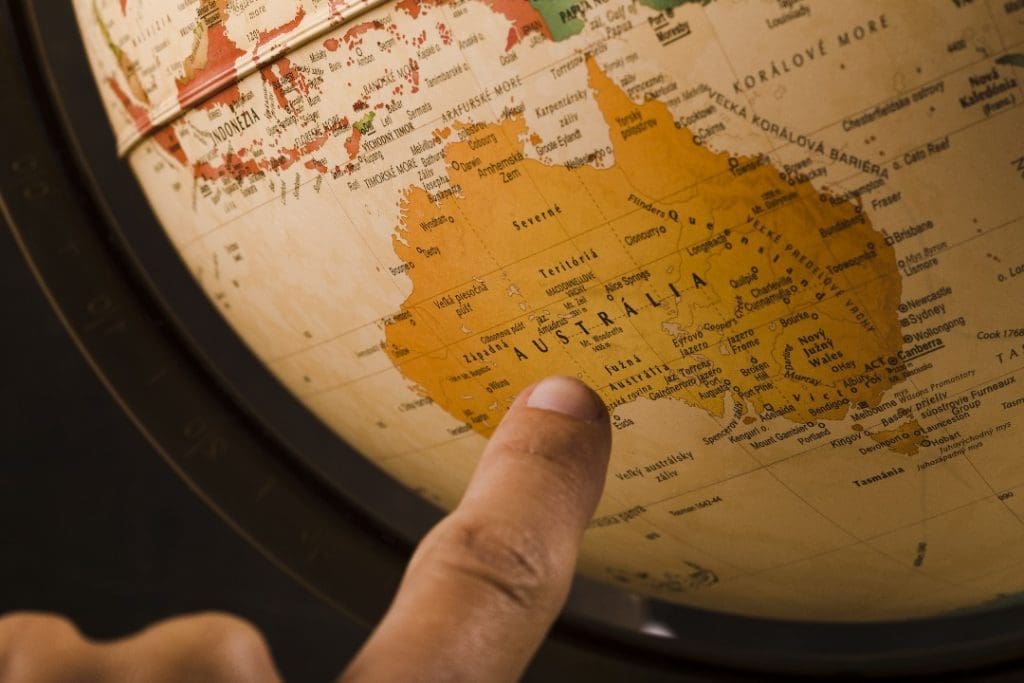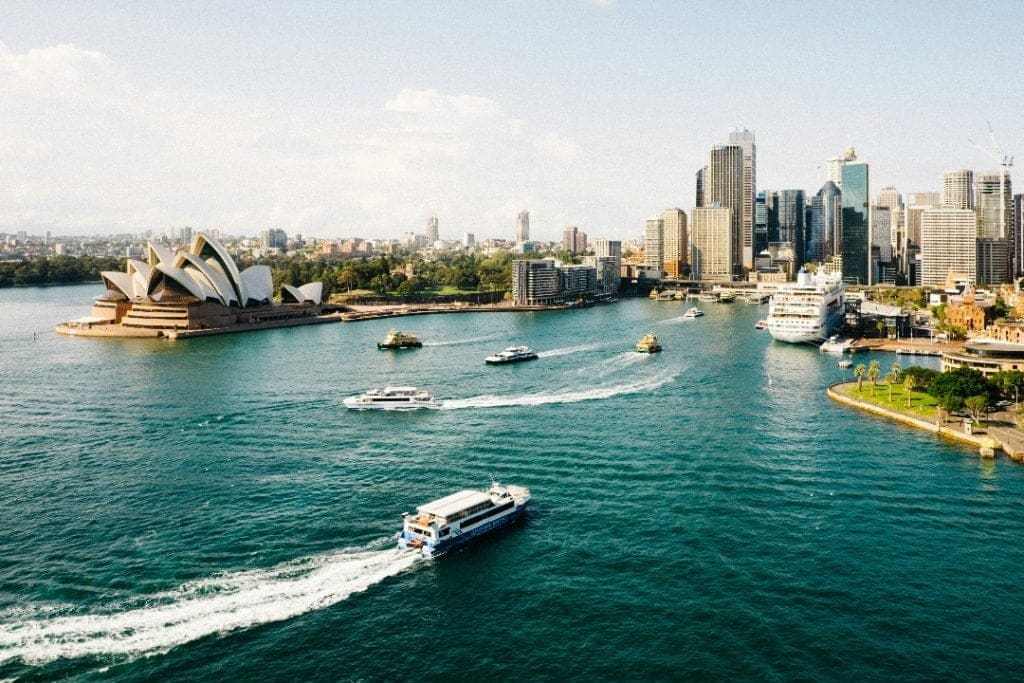When it comes to choosing between working in Australia vs New Zealand, the decision isn’t just about picking a location—it’s about shaping your life experience. Both nations are a holidaymaker’s dream, boasting breathtaking beaches, unique wildlife, friendly locals, and a laid-back vibe that promises a fulfilling work-life balance. But what makes one country better than the other for work?

In this article, we aim to settle the great debate. Whether you’re lured by the “Awesome” allure of Australia or the “Never-going-to-leave” charm of New Zealand, This post will explore the key differences between working in Australia vs New Zealand, examining aspects such as economic opportunities, work environment, visa policies, and overall quality of life. By the end, you’ll have a clearer picture of which destination aligns best with your career aspirations and lifestyle. Where would you rather work and play? What’s your take on the Australia vs New Zealand debate? Let’s dive in and find out which country suits your working lifestyle best.
Overview of Job Markets in AU vs NZ
Australia and New Zealand both offer vibrant job markets, but their scales and focuses differ significantly.
- Australia: Boasting a larger and more diverse economy, Australia provides a wide array of career opportunities across various sectors, including finance, technology, healthcare, and mining. Cities like Sydney, Melbourne, and Brisbane serve as economic powerhouses, attracting professionals from around the globe.
- New Zealand: While more compact, New Zealand’s job market is robust, especially in agriculture, tourism, and renewable energy. Cities like Auckland and Wellington are growing hubs, offering unique job opportunities in environmental science, adventure tourism, and sustainable agriculture.
AU vs NZ Key Industries and Sectors:
In Australia, key industries include Finance, Mining (e.g., coal, iron ore, gold), Technology, Healthcare and Education.
In New Zealand, key sectors consist of: Agriculture, Forestry, and Fishing (e.g., dairy cattle farming, sheep farming, kiwifruit growing), Tourism, Manufacturing (e.g., food processing, wood product manufacturing), Administrative and Support Services, Information Media and Telecommunications.
AU vs NZ Salaries & Cost of Living:
Australia generally offers higher salaries across various fields to match its higher cost of living. For instance, professionals in finance and technology sectors can expect competitive pay rates particularly in urban centers like Sydney (around AUD 85,000).
New Zealand provides a more affordable lifestyle, albeit with lower salaries in some sectors compared to Australia with an average salary of around NZD 70,000 in Auckland. However, the cost of living is also lower here, making it an attractive option for those seeking a balance between income and living expenses.
Average Monthly Expenses (Sydney)
Rent (1-bedroom apartment): AUD 2,000
Groceries: AUD 600
Transportation: AUD 150
Utilities: AUD 200
Average Monthly Expenses (Auckland)
Rent (1-bedroom apartment): NZD 1,500
Groceries: NZD 500
Transportation: NZD 100
Utilities: NZD 180
Disposable Income and Financial Well-Being
To illustrate the impact of these factors, let’s consider an example:
Software Engineer in Sydney:
Salary: AUD 110,000
After-tax income (approx. 32.5% tax rate): AUD 74,250
Monthly disposable income:
Income: AUD 6,187
Expenses: AUD 2,950 (rent, groceries, transportation, utilities)
Disposable income: AUD 3,237
Software Engineer in Auckland:
Salary: NZD 100,000
After-tax income (approx. 30% tax rate): NZD 70,000
Monthly disposable income:
Income: NZD 5,833
Expenses: NZD 2,280 (rent, groceries, transportation, utilities)
Disposable income: NZD 3,553
While salaries are higher in Australia, the higher cost of living can balance out the financial advantage. New Zealand, with lower living costs, can offer similar or even higher disposable income despite lower salaries.
See the Top 10 Highest Paid Engineering Jobs in Australia in 2024
Work Environment and Culture in Australia vs New Zealand

When it comes to work environment and culture, both Australia and New Zealand offer distinct experiences that can significantly impact your professional and personal life. Understanding these differences can help you make an informed decision about where to advance your career.
Impact of Technology on Employment
The Australian job market has seen significant shifts due to advancements in technology. According to the Australian Bureau of Statistics (ABS), the technology sector is one of the fastest-growing industries, with a projected annual growth rate of 5.4% over the next five years. Jobs in artificial intelligence, data science, and cybersecurity are particularly in high demand. The Australian Digital Pulse 2023 report by Deloitte highlights that the tech industry contributed approximately AUD 167 billion to the Australian economy in 2023, creating over 750,000 jobs.
Similarly, New Zealand’s tech sector is booming. The 2023 TIN Report (Technology Investment Network) indicates that the technology sector is now New Zealand’s third-largest export sector, contributing NZD 14.3 billion to the economy. The report also shows a 6.5% increase in tech jobs, with software development, cloud computing, and IT project management being key areas of growth. The rise of tech hubs in cities like Wellington and Auckland further underscores this trend.
Workplace Culture
In Australia, the workplace tends to be more competitive and fast-paced, especially in major cities like Sydney and Melbourne. There’s a strong focus on productivity and results, which often translates into numerous opportunities for career advancement. The average workweek in Australia is about 38 hours, and the minimum wage stands at AUD 21.38 per hour as of 2022.
Conversely, New Zealand offers a more relaxed and community-oriented work environment. While the work culture is friendly and supportive, it may lack the competitive edge found in Australia. This can sometimes limit career growth, but it also fosters a balanced and stress-free atmosphere. The average workweek in New Zealand is around 37.5 hours, with a minimum wage of NZD 21.20 per hour.
Work-life Balance and Employee Benefits
Australia is known for its strong emphasis on work-life balance. Employees enjoy generous annual leave policies, typically receiving four weeks of paid leave annually, plus public holidays. Additionally, many companies offer flexible working arrangements and robust employee benefits, including comprehensive healthcare and retirement plans.
In New Zealand, work-life balance is also highly valued, although the benefits may not be as extensive as those in Australia. Employees generally receive four weeks of paid leave per year, along with public holidays. The country is renowned for its excellent parental leave policies and flexible work hours, making it easier for employees to manage their work and personal lives.
Economic Data and Job Market Trends
Australia’s economy has shown resilience, bouncing back from pandemic-induced slowdowns. The Reserve Bank of Australia (RBA) highlighted that the unemployment rate fell to 3.5% in June 2023, the lowest in nearly 50 years . Key sectors driving this recovery include healthcare, construction, and education. The healthcare sector alone is expected to see a 15% increase in employment over the next five years due to an aging population and increased healthcare spending ..
New Zealand’s economic recovery has been robust, with an unemployment rate of 4.0% as of the second quarter of 2023 . The agricultural sector remains a cornerstone of the economy, but there has been significant growth in renewable energy and tourism. The renewable energy sector is particularly notable, with investments in wind and solar power projected to create thousands of jobs over the next decade . Additionally, the government’s focus on sustainable tourism is expected to boost employment in this sector as global travel rebounds.
Job Satisfaction and Employee Engagement
Job satisfaction and employee engagement are essential metrics for assessing workplace culture. Surveys indicate that Australian employees report high levels of engagement and job satisfaction, particularly in sectors like technology and healthcare. The competitive environment drives innovation and personal development.
New Zealand employees also report high levels of job satisfaction, particularly appreciating the work-life balance and supportive work culture. While the work environment may not be as competitive, it provides a sense of community and belonging, which can contribute to overall job satisfaction.
Comparing Visa and Immigration Policies of Australia vs New Zealand

Visa and immigration policies play a crucial role for anyone considering relocation or extended stays in foreign countries. Understanding these differences can help you make an informed decision.
Immigration Policies and Work Permits
Australia: Australia’s immigration policy is proactive in attracting skilled workers, especially those in high-demand sectors like healthcare, technology, and engineering. The process to obtain work permits is generally straightforward for skilled professionals, with multiple visa categories designed to meet the needs of various industries.
New Zealand: New Zealand focuses on selecting migrants who can contribute positively to the country’s economic growth, particularly targeting skill shortages. While their immigration policies are thorough, the process can be more stringent and slower compared to Australia, requiring precise documentation and adherence to specific criteria.
Pathways to Permanent Residency
Australia offers clear and structured pathways to permanent residency through various skilled migration programs. The criteria are well-defined, and there are opportunities to fast-track residency for those in high-demand professions. For instance, individuals on the Skilled Independent visa (subclass 189) can transition to permanent residency if they meet the required points and have relevant work experience.
While New Zealand does provide pathways to permanent residency, the process tends to be longer and more complex. The Skilled Migrant Category visa offers a route to residency, but the eligibility criteria are stringent, and fewer fast-track options are available compared to Australia.
Quality of Life in AU vs NZ

When comparing the quality of life in Australia vs New Zealand, it’s clear that both countries offer unique advantages and challenges. In terms of cost of living and housing, Australia typically has a higher cost of living with cities like Sydney and Melbourne ranking among the most expensive globally. However, higher wages often offset these costs. On the other hand, New Zealand offers more affordable housing options, with a lower median house price to median household income ratio, making it easier for residents to secure comfortable living spaces.
Cost of Living and Housing
One of the most significant aspects to consider is the cost of living and housing. In Australia, cities like Sydney and Melbourne have higher average rents and home prices compared to New Zealand’s major cities. For instance, Sydney’s average rent is about 10% higher than Auckland’s, with home purchasing prices being approximately 20% more expensive. The median house price in Sydney, for instance, exceeds AUD 1 million, compared to Auckland’s median house price of around NZD 820,000. Renting also tends to be more expensive in Australia; a one-bedroom apartment in Sydney averages AUD 2,000 per month, while in Auckland, it’s about NZD 1,500.
Healthcare Systems and Education Opportunities
Australia’s healthcare system is robust, offering both public and private options that ensure a high standard of care. Additionally, Australia is home to several world-renowned universities, providing excellent higher education opportunities. On the other hand, New Zealand’s publicly funded healthcare system is accessible to all residents and offers quality care. The country’s educational institutions are also highly regarded, particularly in research and innovation fields.
Climate and Lifestyle Considerations
When it comes to climate, Australia offers a diverse range—from tropical conditions in the north to temperate climates in the south. This allows for a variety of lifestyles, although extreme weather events like droughts can affect the quality of life in some regions. New Zealand, with its moderate maritime climate, is ideal for outdoor enthusiasts. Its compact size allows for easy access to beaches, mountains, and forests, making it perfect for those who value work-life balance and natural beauty.
Conclusion
When it comes to deciding between working in Australia vs New Zealand, the choice isn’t merely about location—it’s about shaping your future. Both nations boast breathtaking landscapes and offer a laid-back lifestyle, but their unique opportunities and challenges set them apart. Australia’s cosmopolitan cities like Sydney and Melbourne contrast with New Zealand’s quaint, scenic towns. While Australia offers a larger, more diverse economy with higher salaries and a competitive work environment, New Zealand provides a more relaxed, community-oriented atmosphere with a lower cost of living.
In making your choice, consider not just where you’ll work, but where you’ll thrive. Assess the economic opportunities, work culture, visa policies, and quality of life in both countries. By analyzing these factors, you can ensure that your next career move is not just a job, but a pathway to a fulfilling life. Choose wisely, and the future could be yours to mold in the perfect setting.



